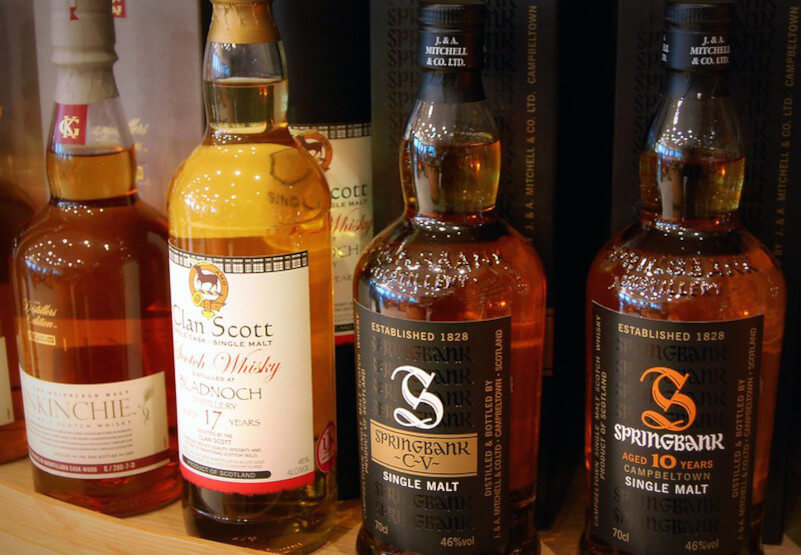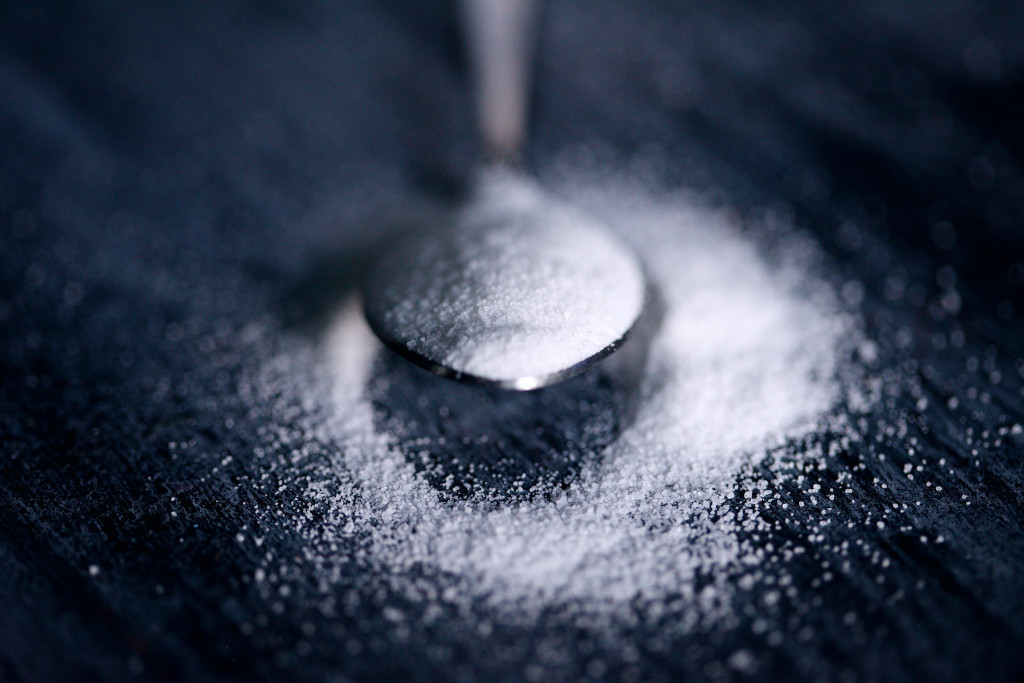If you have diabetes, hypoglycemia, or another condition connected to sugar, you should monitor your sugar intake closely. Scotch whiskey has a reputation for having a high sugar content, which is widely misunderstood. After all, fermenting sugars are responsible for turning cereals like barley into ethanol.
What is the exact sugar content of Scotch whiskey? In a word, not much. But this is a one-off occurrence. There is very little sugar in it if you just drink it on the rocks without any kind of mixer. However, the sugar level increases dramatically when combined with other beverages, such as ginger ale or Coca-Cola. However, some whiskey companies use sugar in their recipes.
Scotch whiskey: What Is the Sugar to Alcohol Ratio?
Sugar content is low at 0.1 grams per 100 milliliters for a typical bottle of 86-proof Scotch whiskey. That’s equivalent to around a quarter of a teaspoon of sugar every half cup. This equates to 0.088 grams of sugar in a standard shot of 44 milliliters (2 34 teaspoons).

However, this only applies if no other mixers, such as coke, ginger ale, ginger beer, or club soda, are included with the shot. This is only for Scotch whiskey that has been diluted with water or ice. While the added sugar in a Scotch whiskey cocktail from club soda probably isn’t too much to worry about, it is worth noting.
While ginger beer and ginger ale are high in sugar, club soda is not. None of these alternatives, however, can compare to the abundance of sugar found in a Coke. Add at least 18 grams of sugar when you mix in a can of ginger ale or beer, for example. This increases to over 24 grams if Coke is included. One of the beverages has over two tablespoons of sugar.
What Effects Do Distillation, Fermentation, and Ageing Have on Scotch Whiskey’s Sugar Content?
Scotch whiskey’s low sugar content is a result of the distillation process. Sugars are almost eliminated throughout the fermentation and distillation processes, and those that remain are greatly diluted.
Fermentation
Scotch whiskey’s mash base consists of barley and other grains, which are fermented so that the yeast may consume the carbohydrates they contain. Ethanol and other congeners are created when yeast digests the grains. Almost all of the sugars in the system are used up in this procedure, however, some may accumulate again as a result of age.
Distillation
The yeast and grain fragments, along with the concentrated sugars, will eventually settle into the base of the vessel. These scraps, often known as “the wort,” are discarded before distillation. The surplus wort, and therefore sugar, is eliminated throughout the many distillation processes used to produce most premium spirits. Scotch whiskey doesn’t break the mold. Most of the sugar is dissolved and evaporated during the distillation process’ low boiling point.
Aging and Sugar
Oak barrels undergo a chemical change during the toasting and charring process before being used to age whiskey. This process essentially renders the hemicelluloses in wood reactive by degrading them. This means that it contributes a trace quantity of sugar to Scotch whiskey when it is aged. This occurs as a result of chemical reactions between the toasted wood inside the barrel and the ethanol in the whiskey.
Caramel Colouring Contains Sugar
Additionally, 2.5% caramel coloring may be added to low-end whiskey and bourbons. This might perhaps sweeten the deal. However, many premium Scotch whiskies use caramel coloring to distinguish themselves from the competition.
Distillers can use this to make whiskies that appear more aged by giving them a deeper color. However, traditionalists who make straight Scotch whiskies won’t alter the color of their products by adding caramel.
Because of the way it is made, caramel coloring has a sweet taste when added to alcoholic beverages. It is produced by caramelizing glucose and fructose into a dark syrup through heating. The range of tones goes from very light to almost pitch dark.
When Does Whiskey Become Sugary, and How Can You Tell?
Here are several warning signs that a spirit may have too much sugar:
- If a spirit like Rum or whiskey is labeled as “spiced,” then there’s a good probability that they’ve added sugar to it.
- The sugar content in liqueurs, which are defined as “flavored and sweetened distilled spirits,” is significantly higher than that of regular alcohols. Ten grams is OK, but more is fine, too.
- Sugar is added to alcoholic beverages including cognac, brandy, and plum wine, but the amounts are often small and inconsequential. About 2 grams per liter is the norm.
- Sugar is added to some American whiskies, including Jack Daniel’s and other well-known brands of Tennessee whiskey.
Scotch whiskey and Other Spirits, Analysed for Their Sugar Content
In general, excessive levels of sweetness in distilled liquors are unusual and out of the norm. However, the nature of some classic beverages means that they inevitably have high sugar content. White wine typically has between 2 and 4 grams of sugar per serving, whereas dessert wines have 8 grams. On the other hand, white wine contains the same amount as beer unless it’s flavored, and red wine has less than 1 gram.
Scotch whiskey is very sweet, but other spirits contain much less sugar if any at all. In terms of being sugar-free, tequila and vodka are unrivaled. The sugar cane component of many Rums is shockingly low. However, it has a higher sugar content than Scotch whiskey. Sugar is usually added to cheap rums.
Is It Possible to Gain Weight From Whiskey?

Since sugar is linked to gaining weight, the low sugar content in Scotch whiskey must mean it prevents you from putting on weight, right? Almost, but not quite. Stop for a second and think about it before you chug half a bottle of sugar-free Glenlivet.
True, there is relatively little sugar in pure Scotch whiskey, but that doesn’t make it any less calorie dense. About 250 calories can be found in just over 6 12 tablespoons. This means there are 220 calories in a double shot of Scotch whiskey.
Moderation is the Key
Therefore, while a nightly shot or two of Scotch whiskey could seem like a nice idea, you shouldn’t get into the habit of doing so. If you consume more calories than you burn, it will be visible and you will gain weight. However, research suggests that drinking Scotch whiskey occasionally can help reduce the risk of developing tumors, cardiovascular disease, and cancer. As is the case with most things, excess of a good thing is bad. Moderation is the key. Scotch whiskey, on the other hand, is meant to be savored slowly and socially. You should also listen to your doctor’s advice if you have diabetes, hypoglycemia, or hyperglycemia.
Understanding the Sugar Contents in Scotch Whiskey
Scotch whiskey, as you can see, does not contain a lot of sweetness. There are minuscule levels in standard Scotch whiskey and Irish Bourbon. However, certain whiskies that have been flavored or sweetened will. Both the chemical reaction with the oak and the caramel coloring contribute to any sweetness that may be present.
Scotch whiskey, for example, is not inherently sweet; it is the mixer used to produce cocktails that contain it that raises the sugar content. Coke, ginger ale, ginger beer, and club soda all have a lot more sugar than water. However, those with sugar-related health difficulties need not worry if they consume it neat, on the rocks, or in moderation (once or twice per week).

